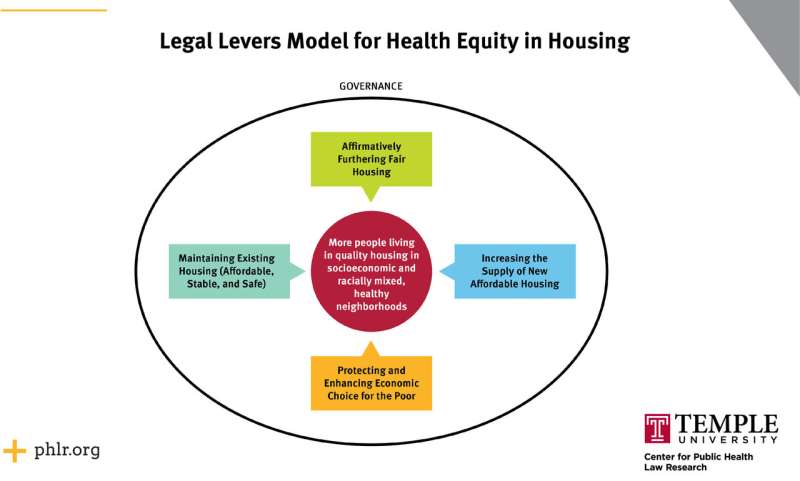New article details evidence around 23 legal levers to promote health equity in housing

A new article published in the Northeastern University Law Review outlines 23 legal mechanisms that may impact health equity in housing in the United States, and reviews the evidence base evaluating each lever.
These levers include the Low-Income Housing Tax Credit program, nuisance property ordinances, inclusionary zoning laws, rent control, fair housing protections, and the minimum wage, among others.
But the evidence base regarding the impact of these levers, the authors find, is minimal, and the number of quality, rigorous scientific studies is even smaller.
"Unfortunately, in reviewing the literature in depth, we find that there is a lack of evidence as to whether many of the individual levers actually do the specific things they intend to do, let alone whether they operate in synergy with the other levers and have an impact on the broader goal of promoting housing equity," said author Katie Moran-McCabe, JD, special projects manager at the Center for Public Health Law Research.
This is problematic, Moran-McCabe and her co-authors caution, because this ignorance of the law's effects can foster and support the belief that problems that have been addressed in law have been solved, or are in the process of being solved, when in fact the solutions may not really be solutions at all.
The article introduces a model that divides the levers among five core domains intended to promote greater health equity in housing:
- Increasing the Supply of New Affordable Housing
- Maintaining Existing Housing as Affordable, Stable and Safe
- Affirmatively Furthering Fair Housing
- Protecting and Enhancing Economic Choice for the Poor, and
- Governance and Planning
"Since housing-related problems are a reflection of a complex system, tackling them as if they were separate or discreet issues isn't a practical or effective way of approaching the overall problem," said Moran-McCabe. "Our goal is to create a tool to help people interested in a systematic approach think about the ways in which these legal levers interact, and to identify areas for evaluation needed to support the development of strategies to use these levers to promote housing equity."
This article is the first product in a project funded by the Robert Wood Johnson Foundation's Policies for Action program. A future series of reports will expand the list of legal levers and evidence presented in this article, and offer a research and action roadmap for policymakers, advocates and others to support health equity in housing.
More information: Gutman, Abraham and Moran-McCabe, Katie and Burris, Scott C., Health, Housing and the Law (February 23, 2019). Northeastern University Law Review, Vol. 11, No. 1, 2019. Available at SSRN: ssrn.com/abstract=3340655
The Center for Public Health Law Research at Temple University's Beasley School of Law supports the widespread adoption of scientific tools and methods for mapping and evaluating the impact of law on health. Learn more at PHLR.org


















